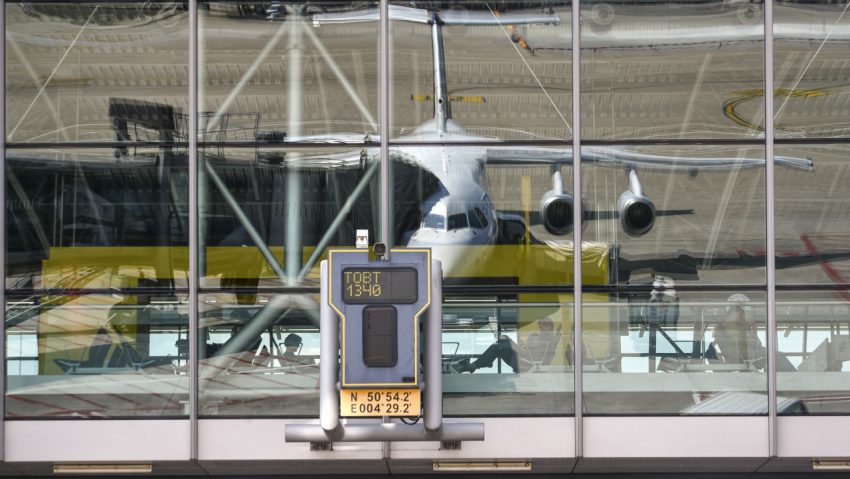Before the current COVID-19 crisis, we have seen air traffic increasing steadily for many years. This has resulted in the investment of solutions to accommodate this growing demand in a most efficient way. At To70, we have been an advocate of the concept of Airport Collaborative Decision Making – Airport CDM, or A-CDM – as a means to increase operational efficiency and optimise capacity from the very onset. The implementation of an A-CDM project aims to put in place all the actions necessary to manage the airport in a data-driven and collaborative way.
This all may sound less urgent in these unseen times, but in this so-called ‘new normal’ for airport operations, airport capacity issues are not expected to dissolve. And in this particular moment in time, we should reflect on upgrading that often-forgotten environmental component of A-CDM, which will help airports to become more sustainable.
How A-CDM works
Airport CDM (A-CDM) aims at optimising the use of resources of the operational partners at airports and improving the predictability of air traffic. It achieves this by creating situational awareness in the progress of turnaround activities. Relevant accurate and timely operational data from airport operators, aircraft operators, ground handlers and Air Traffic Control – and, in Europe, the EUROCONTROL Network Manager – is exchanged on a common platform to work more transparently and collaboratively.
[blockquote text=”The A-CDM resource optimisation principles remain very relevant. Even today.” text_color=”#004361″ show_quote_icon=”yes”][vc_separator type=’transparent’ position=’center’ color=” thickness=’5′ up=” down=”]
In these harsh times for our industry, when demand has dropped to historically low levels, one would expect that capacity optimisation is not an immediate concern for airports. But while traffic volumes may still remain modest for quite some time, newly implemented COVID-19 health safety procedures such as temperature screening and social distancing measures are expected to absorb capacity throughout the entire passenger arrival and departure transit process, from check-in to boarding, or from deplaning to baggage reclaim.
The Airport Research Center (ARC) in Germany very recently showcased simulations on this subject. Focusing on the A-CDM playing field, ARC concluded that the average turnaround of a short-haul flight of a hybrid aircraft operator could extend with 15 minutes in the departure sub-process, while about an extra 3 minutes should be considered in the arrival process. This will considerably impact stand and gate occupation, meaning that maximum capacity levels will be reached rather sooner than later, once the uptick of air travel persists.
Enter A-CDM, with its prime objective to optimise resource utilisation and ‘sweat the assets’. The concept remains a game-changer to become more situationally aware and predictable on airside, allowing airports to maximally accommodate those much-needed flights…
Reducing environmental impact while optimising operations
The benefit of improving predictability results in behaviour that is typically seen on airports that have implemented a robust A-CDM procedural framework: taxi times to gates and runways, as well as waiting times in front of occupied gates are reducing – dramatically in some cases. In its A-CDM Impact Assessment Study published in 2016, EUROCONTROL calculated a whopping 2,2M minutes decrease in taxi times on 13 A-CDM airports in 2015. This equals 34,200 tonnes of taxi fuel less burnt, and 107,200 tonnes of CO2 less emitted.
[blockquote text=”Up to 10% of CO2 emissions of a flight are occurring during ground operations. (1)” text_color=”#004361″ show_quote_icon=”yes”][vc_separator type=’transparent’ position=’center’ color=” thickness=’5′ up=” down=”]
Yet, this aspect of A-CDM implementation has always been a bit snowed-under in the big scheme of the much anticipated – and demonstrated – operational perks of the concept, as a result of a more predictive operational process, based on the upfront sharing of high-quality data.
The current crisis is forcing us to rightfully focus on a more sustainable way to run our industry. The latest technological developments in aircraft design, as well as the introduction of sustainable aviation fuels are true game changers for that matter. From an airport operations perspective, the time has come to give the environmental benefits of the Airport Collaborative Decision Making concept a more prominent spot in any business case for future A-CDM implementations, or the upgrade of existing projects.
[1] Source: IATA industry fact sheets
About To70. To70 is one of the world’s leading aviation consultancies, founded in the Netherlands with offices in Europe, Australia, Asia, and Latin America. To70 believes that society’s growing demand for transport and mobility can be met in a safe, efficient, environmentally friendly and economically viable manner. To achieve this, policy and business decisions have to be based on objective information. With our diverse team of specialists and generalists to70 provides pragmatic solutions and expert advice, based on high-quality data-driven analyses. For more information, please refer to www.to70.com.

